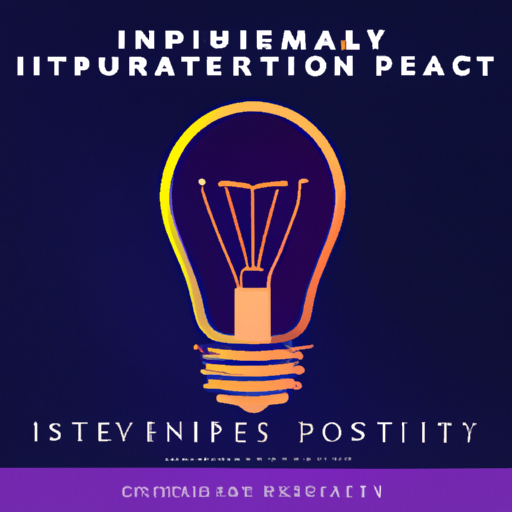In the ever-evolving landscape of intellectual property law, businesses and individuals alike find themselves navigating a complex web of rights and protections. As a business owner, securing your intellectual property is vital to safeguarding your unique ideas, inventions, and creations. However, understanding the intricacies of this legal domain can be overwhelming. That’s where an intellectual property lawyer in Orem, Utah, can provide invaluable assistance. With a deep understanding of intellectual property regulations and a track record of protecting clients’ rights successfully, this lawyer is well-equipped to guide businesses and individuals through the intricacies of intellectual property law. Whether it’s trademarks, copyrights, patents, or trade secrets, consulting with this lawyer is your first step towards securing and preserving your valuable intellectual assets.
What is Intellectual Property
Definition of Intellectual Property
Intellectual Property refers to the legal rights that are granted to individuals or organizations to protect their creations and inventions. It encompasses a wide range of intangible assets, including inventions, designs, symbols, artistic works, and trade secrets. These rights are granted by the law to ensure that creators and innovators can earn recognition and financial benefits from their creations.
Types of Intellectual Property
There are several types of Intellectual Property protection available, each serving a different purpose and providing specific rights to the creators or owners. The major types of Intellectual Property include:
-
Patents: Patents are granted to protect inventions and technological advancements. They provide exclusive rights to the inventor to make, use, and sell their invention for a limited period of time.
-
Trademarks: Trademarks are symbols, logos, or phrases used to distinguish one company’s goods or services from another. They provide exclusive rights to the owner to use and protect their brand identity.
-
Copyrights: Copyrights protect original works of authorship, such as literary, artistic, musical, and dramatic works. They give the creator exclusive rights to reproduce, distribute, display, and perform their work.
-
Trade Secrets: Trade secrets are confidential information that gives businesses a competitive advantage. They include customer lists, manufacturing processes, formulas, and other valuable information that is not generally known to the public.
-
Industrial Designs: Industrial designs protect the visual appearance of a product, including its shape, pattern, or composition. They ensure that the visual elements of a product are not copied or imitated by others.
Importance of Intellectual Property
Protecting Your Intellectual Property
Protecting your Intellectual Property is crucial to safeguard your creations and inventions from unauthorized use or exploitation. It allows you to maintain exclusivity and control over your works, ensuring that you can reap the benefits of your hard work and innovation.
By registering your Intellectual Property, you gain legal rights and remedies against infringement, enabling you to take legal action against anyone who tries to use or copy your creations without permission. This protection not only preserves your rights but also acts as a deterrent for potential infringers.
Benefits of Intellectual Property Protection
Intellectual Property protection provides several benefits to creators and innovators. Some of the key benefits include:
-
Monetary Rewards: By protecting your Intellectual Property, you can capitalize on your creations and inventions, generating revenue through licensing, royalties, or sales.
-
Competitive Advantage: Intellectual Property rights give you a competitive edge in the market by preventing others from copying or imitating your products or services. This allows you to establish a unique brand identity and maintain customer loyalty.
-
Innovation and Progress: Intellectual Property protection encourages creativity and innovation by providing incentives for individuals and organizations to invest in research and development. It fosters a culture of innovation, leading to technological advancements and economic growth.
-
Collaboration and Partnerships: Intellectual Property rights also facilitate collaborations and partnerships, as they provide a legal framework for negotiating licenses and sharing knowledge. This promotes cross-industry cooperation and the exchange of ideas.

Intellectual Property Infringement
Understanding Intellectual Property Infringement
Intellectual Property infringement occurs when someone violates the exclusive rights of the creator or owner of a protected work. It can involve various activities, such as copying, reproducing, distributing, or performing the protected work without authorization.
Infringement can occur in both physical and digital forms, and it can be intentional or unintentional. Regardless of the intent, infringement can have significant consequences for both the infringer and the rights holder.
Consequences of Infringement
Intellectual Property infringement can have severe consequences, both legally and financially. Some of the potential consequences include:
-
Legal Action: The rights holder can file a lawsuit against the infringer, seeking damages and injunctions to stop the infringing activities. This can result in costly legal proceedings and potential monetary penalties for the infringer.
-
Reputation Damage: Infringement can tarnish the reputation and trustworthiness of the infringer, as it implies a lack of respect for the rights of others and unethical business practices.
-
Loss of Market Share: If a competitor infringes on your Intellectual Property, it can lead to market confusion and dilution of your brand. This can result in loss of customers and market share.
-
Loss of Revenue: Infringement can undermine your ability to monetize your creations or inventions, as others may offer similar products or services without authorization. This can lead to financial losses and decreased profitability.
Working with an Intellectual Property Lawyer
When Do You Need an Intellectual Property Lawyer
You may need an Intellectual Property lawyer in various situations, such as:
-
Registration: When you want to register your Intellectual Property, an experienced lawyer can guide you through the process, ensuring that your application meets the legal requirements and maximizing your chances of success.
-
Enforcement: If you discover that someone is infringing on your Intellectual Property rights, a lawyer can help you take appropriate legal action, whether through negotiation, cease and desist letters, or litigation.
-
Contracts and Licensing: When negotiating licensing agreements or contracts involving Intellectual Property, a lawyer can ensure that your rights are protected and represent your best interests.
How an Intellectual Property Lawyer Can Assist You
An Intellectual Property lawyer can provide valuable assistance in various ways, including:
-
Legal Expertise: An Intellectual Property lawyer specializes in the complex laws and regulations governing Intellectual Property rights. They have in-depth knowledge and experience in handling Intellectual Property matters, ensuring that your rights are fully protected.
-
Strategy and Advice: A lawyer can assess your Intellectual Property portfolio, identify potential risks, and devise a comprehensive strategy to protect your creations and inventions. They can provide tailored advice based on your specific needs and objectives.
-
Registration and Maintenance: If you are seeking to register your Intellectual Property, a lawyer can guide you through the entire registration process, ensuring that all necessary documentation is prepared and filed correctly. They can also assist with ongoing maintenance, renewals, and other administrative tasks.
-
Negotiation and Litigation: In cases of infringement or disputes, an Intellectual Property lawyer can represent your interests in negotiations or legal proceedings. They can use their expertise to advocate for you and seek the best possible outcome.
Choosing the Right Intellectual Property Lawyer
Experience and Expertise
When choosing an Intellectual Property lawyer, it is essential to consider their experience and expertise in the field. Look for a lawyer who has extensive experience in Intellectual Property law and a track record of successful cases and client representation. An experienced lawyer will have in-depth knowledge of the relevant laws and regulations, as well as the industry-specific challenges and nuances.
Client Testimonials and Success Stories
Client testimonials and success stories are valuable indicators of a lawyer’s reputation and client satisfaction. Look for testimonials or case studies that demonstrate the lawyer’s ability to handle Intellectual Property matters effectively and achieve favorable outcomes for their clients. Positive feedback and recommendations can give you confidence in your choice of lawyer.
Communication and Availability
Effective communication is essential when working with an Intellectual Property lawyer. Look for a lawyer who is responsive and accessible, willing to answer your questions and keep you informed about the progress of your case. Open and clear communication will ensure that you are actively involved in the decision-making process and fully understand the legal implications of your Intellectual Property matters.
Intellectual Property Registration Process
Overview of the Registration Process
The Intellectual Property registration process can vary depending on the type of Intellectual Property you want to protect. Generally, the process involves the following steps:
-
Research: Conduct a thorough search to ensure that your invention or creation is unique and does not infringe on existing Intellectual Property rights. This step helps you determine the availability and uniqueness of your Intellectual Property.
-
Documentation: Prepare the necessary documents and information required for the registration process. This may include drawings, descriptions, samples, or other supporting materials specific to your Intellectual Property.
-
Filing: Submit your application to the appropriate Intellectual Property office or agency. The application should include all required forms, documents, and fees.
-
Examination: The Intellectual Property office will examine your application to determine if it meets the legal requirements for registration. This may involve a review of the technical specifications, uniqueness, and compliance with relevant laws.
-
Registration and Protection: If your application is approved, your Intellectual Property will be registered, and you will be granted legal rights and protection. The duration of protection may vary depending on the type of Intellectual Property.
Filing for Intellectual Property Protection
Filing for Intellectual Property protection requires careful attention to detail and adherence to the specific requirements of each type of Intellectual Property. Depending on the type of protection you are seeking, you may need to provide various documents, including:
-
Patents: For patent applications, you will need to provide a detailed description of your invention, along with any supporting drawings or designs. You may also need to demonstrate the usefulness and uniqueness of your invention.
-
Trademarks: Trademark applications require the submission of the trademark itself, along with a description of the goods or services associated with the mark. You may also need to provide proof of the mark’s use in commerce.
-
Copyrights: Copyright applications typically involve submitting copies or samples of the copyrighted work, along with a completed application form. You may also need to provide a brief description of the work and its creation.
-
Trade Secrets: Trade secrets are not registered like other forms of Intellectual Property. Instead, they require the implementation of strict measures to maintain confidentiality, such as non-disclosure agreements and internal security protocols.
Timelines and Fees
The timelines and fees associated with Intellectual Property registration can vary depending on the type of protection and the jurisdiction in which you are filing. Generally, the registration process can take several months to several years, depending on the complexity of the application and the workload of the Intellectual Property office.
Fees also vary and may include application fees, examination fees, and maintenance fees for ongoing protection. It is essential to understand the specific requirements and fees associated with your Intellectual Property registration to ensure a smooth and successful process.

Intellectual Property Licensing
Understanding Intellectual Property Licensing
Intellectual Property licensing allows the owner of Intellectual Property to grant permission to others to use their creations or inventions. Through licensing agreements, the owner (licensor) can authorize another party (licensee) to use, reproduce, distribute, or sell their Intellectual Property, subject to specific conditions and terms.
Licensing agreements can be exclusive or non-exclusive, granting either sole rights to a licensee or allowing multiple licensees to use the Intellectual Property. They can also be limited to a specific geographic region or duration, depending on the negotiated terms.
Negotiating Intellectual Property License Agreements
Negotiating Intellectual Property license agreements requires careful consideration of various factors and effective legal representation. Some important factors to consider during negotiations include:
-
Scope of Use: Clearly define the scope of use of the Intellectual Property, specifying the rights granted, the allowed purposes, and any limitations on usage.
-
Royalties and Compensation: Determine the financial terms of the agreement, including royalty rates, payment schedules, and any upfront fees or minimum guarantees.
-
Duration and Termination: Establish the duration of the license and define the circumstances under which either party can terminate the agreement, ensuring both parties’ rights and obligations are clearly outlined.
-
Quality Control: Include provisions that require the licensee to maintain certain quality standards and ensure that the licensed products or services meet the licensor’s expectations and brand reputation.
-
Dispute Resolution: Include clauses that address potential disputes and specify the preferred method of resolution, such as mediation or arbitration, to avoid costly litigation.
-
Confidentiality and Non-Disclosure: Include provisions to protect any confidential information shared during the licensing agreement and ensure that the licensee maintains strict confidentiality.
Intellectual Property Litigation
When Do You Need to Litigate
Litigation may be necessary when Intellectual Property disputes arise, and negotiation or alternative dispute resolution methods fail to resolve the issue. Some common situations that may require Intellectual Property litigation include:
-
Infringement Claims: If someone is using your Intellectual Property without authorization, litigation may be necessary to enforce your rights and seek appropriate remedies.
-
Invalidity Challenges: If a third party claims that your registered Intellectual Property is invalid or not enforceable, litigation may be required to defend your rights and prove the validity of your Intellectual Property.
-
Licensing Disputes: When a licensing agreement is breached, litigation may be necessary to resolve the dispute, seek damages, or terminate the agreement.
-
Unfair Competition: Litigation may be required if a competitor engages in unfair business practices that undermine your Intellectual Property rights, such as false advertising or passing off.
The Intellectual Property Litigation Process
Intellectual Property litigation typically follows a structured process, which may include the following stages:
-
Complaint: The rights holder, known as the plaintiff, files a complaint with the appropriate court, outlining their claims and presenting evidence of the infringement or violation.
-
Discovery: Both parties exchange information, evidence, and documents relevant to the case through discovery processes such as document requests, interrogatories, and depositions.
-
Pretrial Motions: Either party may file pretrial motions, such as motions to dismiss or motions for summary judgment, to resolve certain legal issues or establish the strength of their case.
-
Trial: If the case proceeds to trial, both parties present their arguments, evidence, and witnesses before a judge or jury. The trial process may involve opening statements, examination and cross-examination of witnesses, and closing arguments.
-
Judgment: After considering the evidence and arguments presented during the trial, the judge or jury renders a judgment, determining whether the Intellectual Property rights have been infringed upon and granting appropriate remedies or damages.
-
Appeals: If either party is dissatisfied with the judgment, they may file an appeal to a higher court, seeking a review of the decision. This may involve presenting additional legal arguments or challenging specific aspects of the judgment.

International Intellectual Property Protection
Challenges of International IP Protection
Protecting Intellectual Property internationally can be challenging due to the variations in laws, regulations, and enforcement mechanisms across different jurisdictions. Some common challenges include:
-
Lack of Harmonization: Intellectual Property laws differ significantly between countries, making it difficult to navigate and enforce rights across borders. This can result in inconsistent protection and potential conflicts.
-
Language and Cultural Barriers: International Intellectual Property protection often involves dealing with different languages, legal systems, and cultural norms. Effective communication and understanding of local customs and practices are crucial to navigating these barriers.
-
Enforcement Issues: Enforcing Intellectual Property rights can be more challenging in some jurisdictions due to limited resources, corruption, or inadequate legal systems. This can make it difficult to combat infringement or resolve disputes effectively.
-
Counterfeiting and Piracy: Counterfeiting and piracy are significant challenges in international Intellectual Property protection. The ease of digital reproduction and the availability of counterfeit products in global markets pose a serious threat to rights holders.
Strategies for Securing International IP
Despite the challenges, there are strategies that can help secure International Intellectual Property protection:
-
Register Intellectual Property: Register your Intellectual Property in each jurisdiction where you seek protection, following the specific requirements and procedures of each country. This helps establish legal rights and provides a basis for enforcement.
-
Research Local Laws: Conduct thorough research on Intellectual Property laws in the target jurisdictions to understand the specific requirements and nuances. Work with local Intellectual Property experts or lawyers to ensure compliance and navigate local practices effectively.
-
Use International Treaties and Conventions: Leverage international treaties and conventions, such as the World Intellectual Property Organization (WIPO) treaties, to simplify and streamline the registration and protection processes across multiple countries.
-
Monitor and Enforce: Keep a vigilant eye on your Intellectual Property rights globally and actively enforce your rights when infringements occur. Work with local law enforcement agencies, lawyers, and Intellectual Property professionals to combat counterfeiting and piracy.
-
Conduct Due Diligence: When entering into international partnerships or collaborations, conduct thorough due diligence to assess the Intellectual Property practices and compliance of potential partners. Use contracts and licensing agreements to protect your rights and ensure compliance.
FAQs about Intellectual Property
What is the difference between a copyright and a trademark?
Copyright and trademarks are two distinct types of Intellectual Property protection. A copyright grants the exclusive rights to reproduce, distribute, display, and perform an original work of authorship, such as a book, song, or artwork. It protects creative expressions fixed in a tangible medium.
On the other hand, a trademark is a symbol, logo, or phrase used to distinguish one company’s goods or services from others. It provides exclusive rights to use and protect a brand identity in connection with specific goods or services.
How long does intellectual property protection last?
The duration of Intellectual Property protection varies depending on the type of protection:
-
Patents: Patents generally last for 20 years from the date of filing the patent application.
-
Trademarks: Trademarks can be renewed indefinitely, as long as the mark is actively used in commerce and renewal fees are paid.
-
Copyrights: Copyright protection generally lasts for the author’s lifetime plus 70 years. For works created by a corporation, the protection typically lasts for 95 years from the date of publication or 120 years from the date of creation, whichever is shorter.
-
Trade Secrets: Trade secrets can be protected as long as the information remains confidential and the owner takes appropriate measures to maintain secrecy.
What is the first step in protecting my intellectual property?
The first step in protecting your Intellectual Property is to conduct a thorough assessment of your creations or inventions to determine the appropriate type of protection. Once you identify the type of Intellectual Property, consult with an experienced Intellectual Property lawyer to understand the legal requirements and develop a strategy for protection.
For most types of Intellectual Property, the next step is to file the necessary applications with the relevant Intellectual Property office or agency. This typically involves submitting the required forms, documents, and fees.
What can I do if someone is infringing on my intellectual property?
If someone is infringing on your Intellectual Property, you have several options for recourse:
-
Cease and Desist Letter: Send a cease and desist letter to the infringer, demanding that they stop using your Intellectual Property or face legal action. A well-crafted cease and desist letter can often resolve the issue without litigation.
-
Negotiation and Settlement: Engage in negotiations with the infringer to resolve the dispute, potentially through a licensing agreement or compensation for the unauthorized use of your Intellectual Property.
-
Mediation or Arbitration: If negotiation fails, consider alternative dispute resolution methods, such as mediation or arbitration, to resolve the dispute outside of court. These methods can be less costly and time-consuming than litigation.
-
Litigation: If all other options fail, you may need to initiate litigation and file a lawsuit against the infringer. Consult with an Intellectual Property lawyer to assess the strength of your case and determine the most appropriate course of action.
Can I transfer my intellectual property rights to someone else?
Yes, you can transfer your Intellectual Property rights to someone else through an assignment or licensing agreement. A transfer of rights may involve selling or assigning the rights to another party, or granting them a license to use the Intellectual Property for a specific purpose or duration.
When transferring your Intellectual Property rights, it is important to consult with a lawyer to ensure that the agreement effectively protects your interests and outlines the exact scope of the transfer or license.
Note that some types of Intellectual Property, such as copyrights, may require a written agreement to be legally enforceable. Therefore, it is crucial to seek legal advice when transferring or licensing Intellectual Property rights.



